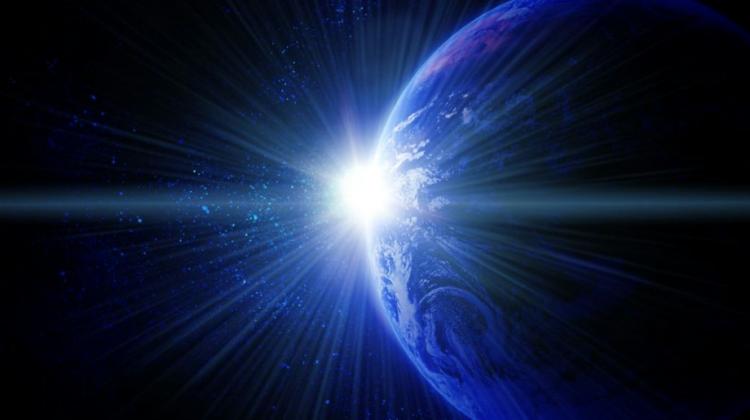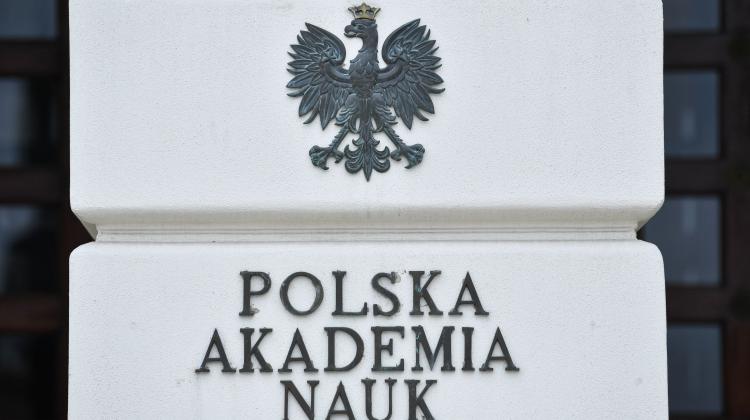Breakthrough discovery: ripples in the fabric of spacetime observed on Earth
 Photo: Fotolia
Photo: Fotolia
Scientists have reason to celebrate! On Thursday they announced to the world that for the first time they observed gravitational waves. International studies – in which Polish scientists were also involved - have shown that ripples in the fabric of spacetime caused by a cosmic disaster washed over Earth in September.
The results of the experiment were announced at conferences held simultaneously in the US and Italy. Polish Academy of Sciences also organized a conference in Warsaw. Scientists from a dozen countries including Poland participated in the study. The researchers are affiliated with experiments at the detectors LIGO in the US and Virgo in Italy - a total of more than 1,300 people (including 15 Poles).
On September 14, 2015 two detectors of American Observatory LIGO, located 3 thousand km away from each other (one in Washington and one in Louisiana) almost at the same time registered the signal of gravitational waves from two colliding black holes. "This is the first direct registration of a gravitational signal on Earth" - said in an interview with PAP Prof. Andrzej Królak from the Institute of Mathematics PAS in Warsaw and the National Centre for Nuclear Research. Prof. Królak is the leader of the Polish group of scientists involved in this project.
EVENT: BIG COLLISION
What scientists have observed, is evidence of a cosmic disaster. "These were two black holes - one with a mass of 29 solar masses, and the other with a mass of 36 solar masses. These black holes merged into a black hole with a mass of 62 solar masses. The remaining 3 solar masses were radiated as gravitational waves. That signal was observed on Earth" - said Prof. Królak. He noted that although the collision of black holes lasted shorter than a blink of an eye, and happened was more than 1 billion years ago, it was really powerful. The speed which black holes reached just before the collision was half the speed of light (150 thousand km/sec.). Gravitational wave resulting from this cosmic collision travelled at the speed of light through the universe and only last year reached Earth.
"The signal that we recorded, lasted only 0.12 seconds, but it was extremely clear and consistent with the models based on Einstein’s general theory of relativity" - said Prof. Królak. He added that Einstein\'s general theory of relativity predicted the existence of gravitational waves. Until now, there was only indirect evidence that gravitational waves existed and that Einstein was right also in this point of his famous theory.
"We have two discoveries in one. Even the direct detection of gravitational waves itself is fundamental. But in addition, we have also discovered a binary system of black hole, which has never been observed before" - commented Królak. He added that such a system probably would not generate light or radio waves, only a gravitational wave.
"A new field of astronomy opens - astronomy of gravitational waves. We are at a turning point" - noted the researcher. He explained that further research on gravitational waves may shed light on what goes on beyond the event horizon of black holes and answer the question of what the singularity occurring in black holes might be. These question fascinating for physicists, do not have clear answers.
OUTSMART THE RIPPLING SPACETIME
American detectors which detected the "ripples" in spacetime are monumental laser interferometers. Their tunnels are L-shaped, and each arm is 4 km long. Laser light travels in the interior of the arms. In simple terms, the point is to checking with great precision (thousandths of the diameter of a proton) whether the length of one arm system changes in relation to the length of the second arm. It would seem that the results should always be the same. And it turns out that they are not. Gravitational wave passing through the Earth - which is hard to detect, because it the entire space-time around us for a brief moment - can reveal itself in the results of measurements in the interferometer. That is what was observed on September 14.
"Gravitational wave causes some abnormal curvature of space-time. This makes the optical paths in the two arms a bit different. Because when spacetime changes - light can travel a little longer through one arm, and shorter in the other" - described Andrzej Królak.
The problem is not only to register these signals with sufficient precision, but also to extract them from the noise. That’s where the methods of data analysis - including statistical methods on which Prof. Królak has been working - come in handy.
GOOD JOB POLES
American LIGO interferometers work shoulder to shoulder with a little smaller interferometer Virgo in Italy (its arms have a length of 3 km). Virgo, however, did not observe gravitational waves in September. It was undergoing renovation at the time. Operations will resume at the end of this year. The three devices working together may offer more opportunities to study the next gravitational waves - including more accurate determination of their place of origin in space.
The fact that Virgo has not registered gravitational waves yet does not diminish the splendour of researchers who worked on this project, including Poles who worked at Virgo in the Polgraw team. Teams from Europe and America agreed long ago that they would sign the research together - regardless of the interferometer in which discoveries are made.
"The role of Poles in this project was quite important" - commented in an interview with PAP Vice President of Polish Academy of Sciences, Prof. Paweł Rowiński. He mentioned that the tasks of Poles in the project included the analysis of data from the US LIGO detectors, researching astrophysical sources of gravitational waves, the construction of models of gravitational wave signals and participation in the development of the Virgo detector.
He said that the project involved researchers from the Institute of Mathematics PAS, Nicolaus Copernicus Astronomical Center PAS, National Centre for Nuclear Research, and Universities in: Białystok, Toruń, Warsaw, Wrocław and Zielona Góra.
FUTURE RESEARCH
"I expect that by the end of the year we will have observed gravitational waves a dozen or so more times, and maybe even more than that" - said Prof. Królak. Scientists hope that the interferometers LIGO and Virgo will detect gravitational waves caused not only by successive collisions of black holes, but also collision of stars, rotating neutron stars and supernova explosions. Prof. Królak noted that gravitational waves form everywhere - even on Earth. But they are so small that we might never be able to observe them.
FALSE START? NOT THIS TIME!
In March 2014 another team of scientists studying gravitational waves scored a significant fail and announced the discovery of gravitational waves based on erroneous interpretations. Those results came from a completely different type of research - observation of the microwave background radiation with BICEP2 telescope. It turned out that there was an error in this study (relevant factors were not taken into account). A year ago, the publication was publicly withdrawn. "This time - in our study - a mistake is practically impossible" - said Prof. Królak. Researchers would have to be very unlucky - accidental observation of such a strong signal by two interferometers at the same time, it is an event that may occur once in 200 thousand years.
PAP - Science and Scholarship in Poland, Ludwika Tomala
lt/ ula/ mrt/
tr. RL
Przed dodaniem komentarza prosimy o zapoznanie z Regulaminem forum serwisu Nauka w Polsce.


















